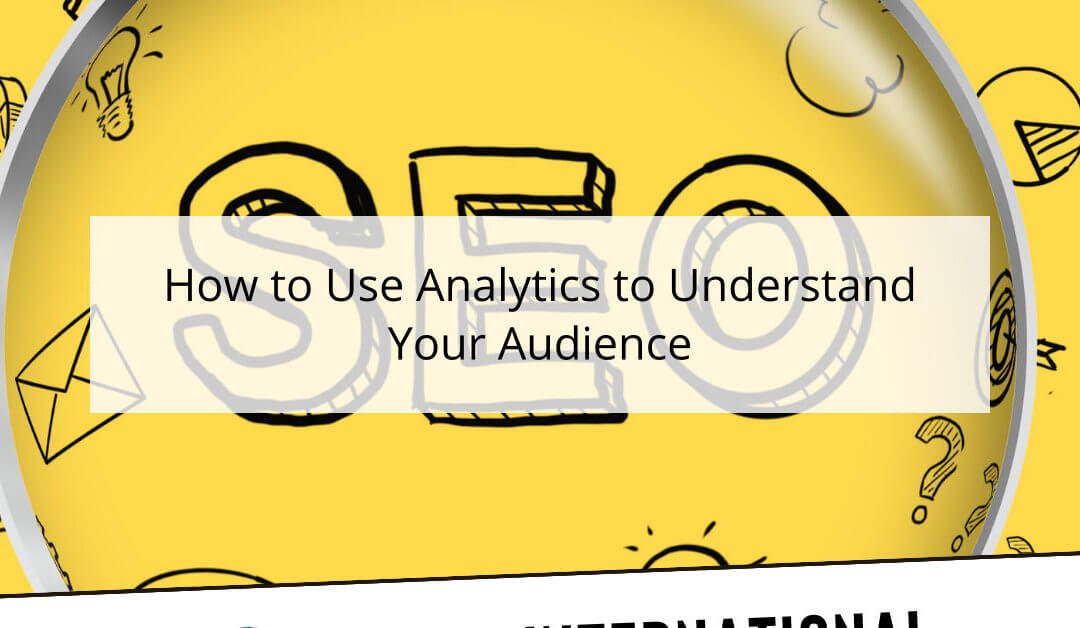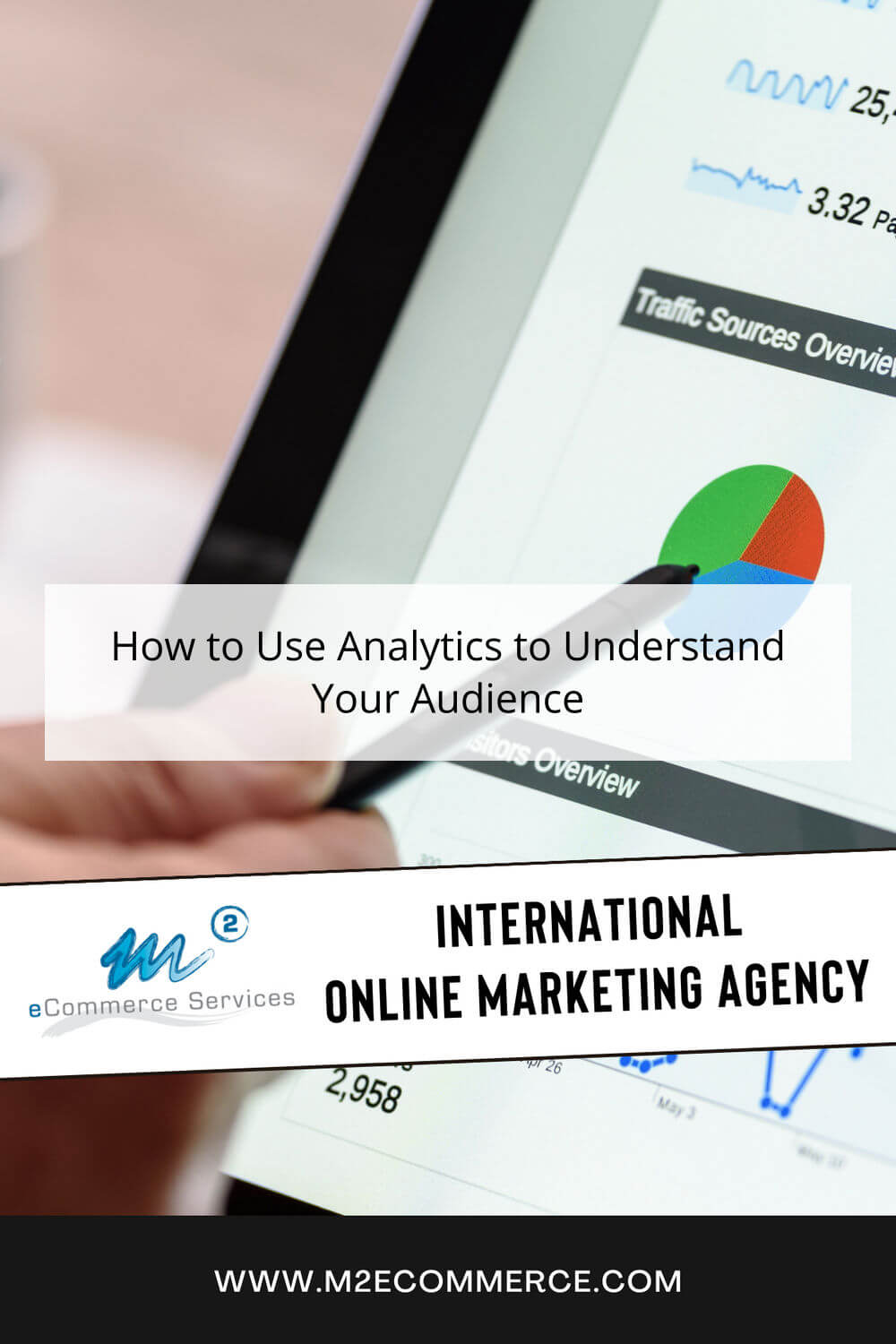Knowing your audience is essential for any successful business, and analytics can help you get there. As an analytics content strategist, I’m here to tell you that using data to understand who your customers are, how they behave, and what they want will give you the insight you need to make informed decisions.
With an understanding of your audience, you’ll be able to create content that resonates with them and gives them a sense of control over their interactions with your business.
In this article, I’ll show you how to use analytics to gain valuable insights about your audience.
Identifying Your Target Audience
Understanding your target audience is a crucial step in using analytics to inform content strategy. It’s like a jigsaw puzzle; you have to fit the pieces together to see the bigger picture.
Segmenting demographics and creating personas enables you to unlock a deeper level of insight into the needs, beliefs, and motivations of those you wish to reach.
For example, if you are looking for ways to improve customer engagement through digital campaigns, understanding what types of messaging resonates with your target demographics will help you create an effective communication plan. Similarly, learning more about who interacts with your website or app can provide valuable insights into which features should be prioritized for development efforts.
By diving deep into who is most likely to engage with your product or service, you can craft experiences that are tailored specifically for them – experiences that will ultimately lead them down a path towards conversion.
Through thoughtful analysis and experimentation, you can get closer than ever before to understanding what makes people tick and how best to reach them emotionally. Taking this approach leads not only towards higher conversions but also deeper loyalty from customers who feel appreciated and understood.
Collecting And Analyzing Data
Gathering data is essential to understanding your audience. As an analytics content strategist, the first step is to segment your data. By dividing the information into specific categories, it becomes easier to find trends and understand what resonates with your target market. Mining these trends will enable you to develop content strategies that are tailored towards your audience’s needs, creating a more impactful connection between you and them.
The next step in understanding your audience with analytics is analyzing the collected data. Carefully examining the metrics provides key insights into user behaviors and preferences. This data can be used to create content that speaks directly to their desires, thus strengthening relationships and increasing engagement levels.
Additionally, digging deeper into the information reveals new opportunities for growth or improvement within your organization that may not have been previously identified.
When leveraging these insights from analytics, it’s important to focus on how they can be used most effectively within social media platforms. Content strategists should strive to create engaging posts that capture the attention of viewers while also remaining true to the company’s message and mission statement.
With a comprehensive understanding of user behaviors combined with strategic use of social media channels, organizations can maximize their presence online while building upon their brand identity and authority in their respective industries. Moving forward, this knowledge can be applied across multiple platforms as part of a holistic digital marketing approach for continued success.
Leveraging Social Media Insights
The world of social media is ever-evolving, and understanding the trends within this landscape can be a powerful tool for any content strategist. Immersing oneself in the data can be likened to plunging into an ocean of knowledge – all the insights you need are right there beneath the surface, waiting to be uncovered.
To get started, here are three key pieces of information to consider when leveraging social media insights:
- Analyzing emerging conversations, topics and hashtags
- Tracking user engagement with your content over time
- Identifying opportunities to optimize existing content
By examining these dynamics, content strategists can gain valuable insight into their audience’s interests and preferences. This allows them to create engaging experiences tailored to their target market and better understand user behavior.
Understanding User Behavior
I’m excited to dive into understanding user behavior!
We’ll start by identifying user patterns, which involves understanding how different users interact with your website.
Then, we’ll move on to analyzing behavioral data to gain insights into user preferences.
Finally, we’ll track user engagement to understand how to keep users engaged.
It’ll be great to see how analytics can help us understand our audience better!
Identifying User Patterns
As an analytics content strategist, it’s essential to identify user patterns to understand your audience and create tailored experiences.
Customer segmentation and data mining are two powerful tools to help you build a comprehensive picture of user behavior. Taking the time to analyze user data can provide valuable insights into who is using your service or product, how they use it, and what motivates them.
By understanding these patterns, you can create more effective customer segments that help you target the right users with better messaging and products that meet their needs. This can also help you gain control over how users interact with your product or service – giving you a competitive edge.
Ultimately, by leveraging analytics to understand user behavior, you can deliver superior customer experiences that drive long-term value for your business.
Analyzing Behavioral Data
Understanding user behavior is a crucial part of any analytics content strategy. By analyzing behavioral data, we can gain deep insights into how our users interact with our products and services.
This information can help us build segmentation strategies that target specific customers and create tailored experiences, allowing us to stay ahead of market trends. Additionally, by leveraging this data, we can identify what drives user decision-making and adjust our messaging accordingly – giving us the power to drive long-term value for our business.
It’s clear that understanding user behavior is essential to creating successful customer experiences.
Tracking User Engagement
Now that we understand the importance of user behavior, let’s turn our focus to tracking user engagement. By tracking user engagement, we can gain valuable insights into how and why users are interacting with our products and services. This information can help us segment users more effectively and test hypotheses about what’s driving their decision-making.
We can also use this data to create personalized experiences that will drive long-term customer loyalty and satisfaction.
By monitoring user engagement, we can make sure our content is always up to date and resonating with customers in the right way. We can also see what features are working best for different segments of users, allowing us to tailor our marketing efforts accordingly.
Finally, tracking user engagement gives us a better understanding of what motivates customers, so we can continue to evolve our product offerings over time.
With this knowledge in hand, we have all the tools necessary to create successful customer experiences that will generate real value for our business.
Interpreting Google Analytics Reports
Now that you have a better understanding of your users, it’s time to dive into the world of Google Analytics. By using Google Analytics, you can easily segment and analyze user data in order to gain insights into their behavior.
The first step is setting up your analytics account and creating goals. Goals are indicators of success for your website or app that you define in advance. You’ll want to create goals that reflect the core activities on your website or app, such as signing up for a newsletter or making a purchase. Before you can create goals, however, you must set up an analytics profile. This allows Google to track user activity and organize data from various platforms (e.g., desktop, mobile).
Armed with data from your analytics profile, you can now build reports that give valuable insights into user behavior. By analyzing these reports and segmenting user data by demographics (age, gender), interests (products viewed), location (region), device type (mobile vs desktop) and more, you can uncover patterns in user behavior and make informed decisions about how best to optimize your website or app for conversions.
It’s also important to consider tracking engagement metrics such as pageviews per session or average session duration when analyzing user behavior. These metrics provide insight into how users interact with content on your website or app and can help identify areas that need improvement. With this information in hand, you’re now ready to start optimizing performance and driving conversions with targeted campaigns based on user behaviors.
Tracking Engagement Metrics
Understanding your audience can be made easier by using analytics to track engagement metrics. This allows you to discover trends and insights that may otherwise be overlooked. Through the analysis of these data points, you can begin to optimize content for maximum engagement and reach.
Here are some key metrics you should consider tracking:
- Number of page visits
- Time spent on page
- Clicks on certain elements within page
- Social Shares of content
In addition to measuring engagement, analytics also provide insight into customer behavior. By studying user paths, you can gain a better understanding of what type of content your audience is interested in consuming. You can track where they click, which pages they visit most frequently, and what time of day they engage with your content.
This data enables you to tailor content that resonates with your audience’s needs. To fully understand your customers, it is essential to combine analytics with customer surveys and interviews. This helps create an accurate picture of who you are targeting and why they respond positively or negatively to certain types of content or design.
Understanding this information gives you the power to make informed decisions about how best to engage them in the future. With this knowledge, you can develop strategies for effectively marketing products or services and creating experiences that meet their needs. Moving forward, gaining insight into your customers’ needs will help ensure success in any business endeavor.
Gaining Insight Into Your Customers’ Needs
Analyzing your customer data can provide invaluable insight into the needs and preferences of your target audience. By contextualizing trends in user behavior and segmenting customers into distinct groups, you can come to a better understanding of their wants and needs.
For example, tracking the buying habits of certain customer segments can give you an idea of what products are resonating best with them. This could help you decide what new products to introduce or which existing ones need to be improved upon.
Additionally, by analyzing the customer journey, you can identify key points where potential customers may have dropped off or where they could use more guidance.
Taking these insights to heart will allow you to create a more tailored experience for your customers that meets their specific needs. With the right analytics tools in place, it’s easier than ever before to make informed decisions about how to customize your service offering for each customer segment.
Ultimately, this will lead to higher levels of satisfaction among your customers and ultimately increase loyalty towards your brand.
Frequently Asked Questions
What Are The Most Effective Ways To Identify My Target Audience?
Are you looking for the most effective way to identify your target audience? Utilizing analytics can provide you with key insights into who your customers are and what they expect from you.
Audience segmentation and customer profiling are two of the most powerful tools in any analytics content strategist’s toolkit, allowing you to quickly create detailed profiles of your ideal customers. With these metrics, you can gain a deeper understanding of who is engaging with your content and how to tailor messages that will resonate with each individual segment.
By taking control of your audiences’ data, you can create more targeted campaigns that drive higher conversion rates and better ROI.
How Can I Use Analytics To Track Customer Loyalty?
Tracking customer loyalty is an important goal for any business, and analytics can help you achieve it.
By leveraging segmentation strategies and monitoring key metrics, you can better understand customer loyalty trends and create custom solutions to improve retention.
With the right analytics tools in place, you can identify patterns among loyal customers and even anticipate behavior to ensure that your efforts are as effective as possible.
Through analytics-driven insights, you can keep your customers coming back over time.
How Can I Use Analytics To Measure Customer Satisfaction?
Understanding customer satisfaction is key to providing a successful product or service. Analytics provide a detailed view of user feedback and market research, allowing you to measure customer satisfaction in an efficient and effective manner.
As an analytics content strategist, it’s important to focus on user experience and create engaging materials that fulfill the subconscious desire for control. With the right strategy, you can use analytics to track customer satisfaction and find ways to improve your product or service.
How Do I Interpret My Analytics Data In A Meaningful Way?
Interpreting analytics data in a meaningful way is key for any successful analytics strategy.
Data visualization and customer segmentation are essential components of this process as they provide an effective way to analyze large sets of data and identify trends.
Using these two metrics, you can gain insight into how your customers behave, what their preferences are, and how satisfied they are with your product or service.
With the right data analysis techniques, you can make better informed decisions about how to improve your product or service and increase customer satisfaction.
What Kind Of Metrics Should I Be Tracking To Measure Engagement?
Analytics data visualizations and content optimization are two of the most effective metrics for measuring engagement.
As an analytics content strategist, it’s important to understand how to interpret these metrics in a meaningful way. By analyzing data visualizations, you can gain valuable insights into user behavior and better understand their motivations.
Content optimization is also key to engaging your audience, as it allows you to tailor content to their specific needs. By tracking this data, you can get a clear picture of what works and what doesn’t, empowering you with the knowledge needed to create content that will capture your audience’s attention and keep them engaged.
Conclusion
Analytics are invaluable tools for understanding our target audiences. With the right metrics and data interpretation, we can gain insight into customer loyalty, satisfaction and engagement that would otherwise be impossible to measure.
A great example of this is a case study from a major e-commerce business, who used analytics to track customer behaviors across their platform. By measuring purchase frequency, time spent on site and product reviews, they were able to better understand their customers’ wants and needs, resulting in increased revenue.
Analytics can empower us to make data-driven decisions that will benefit our business in the long run.



